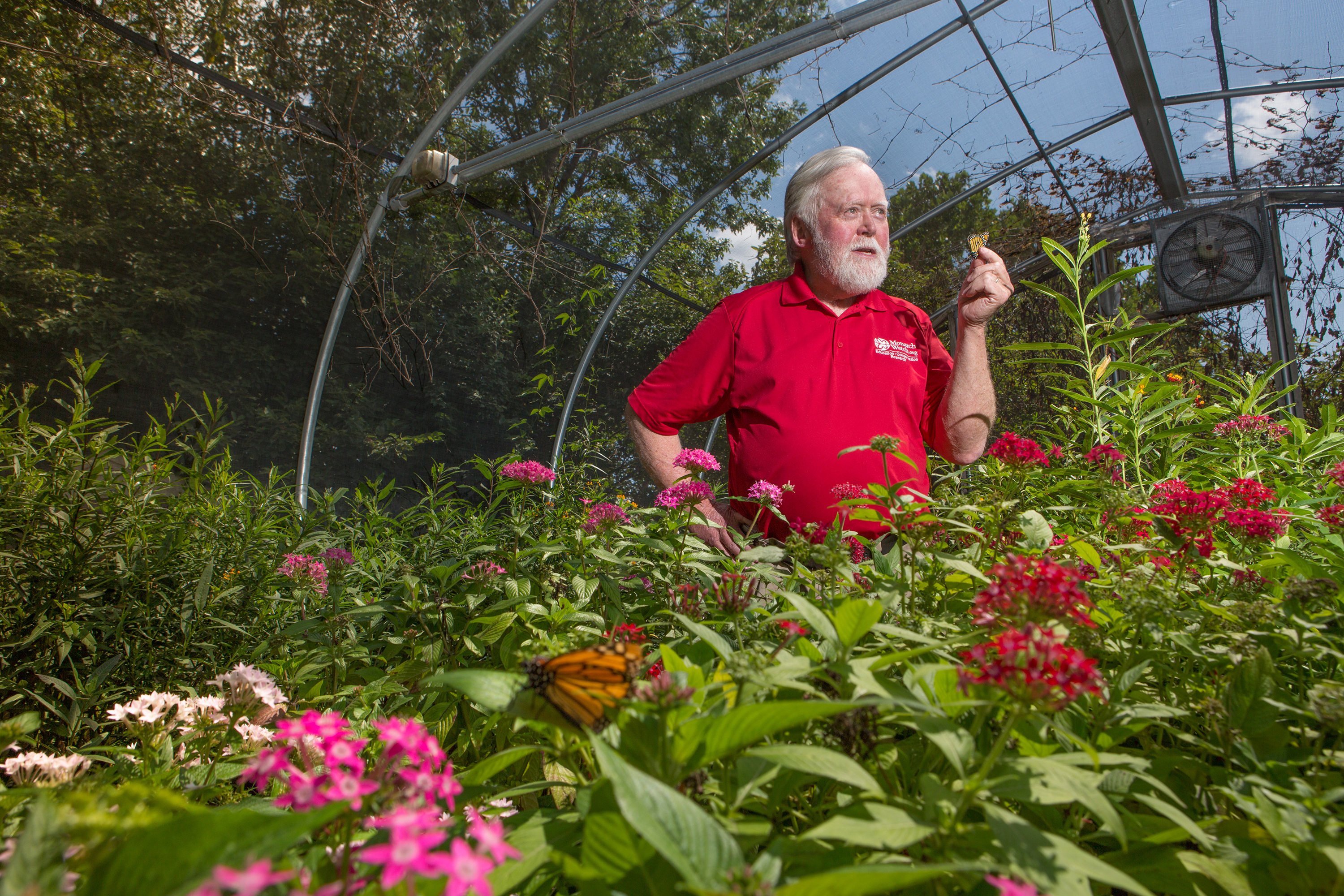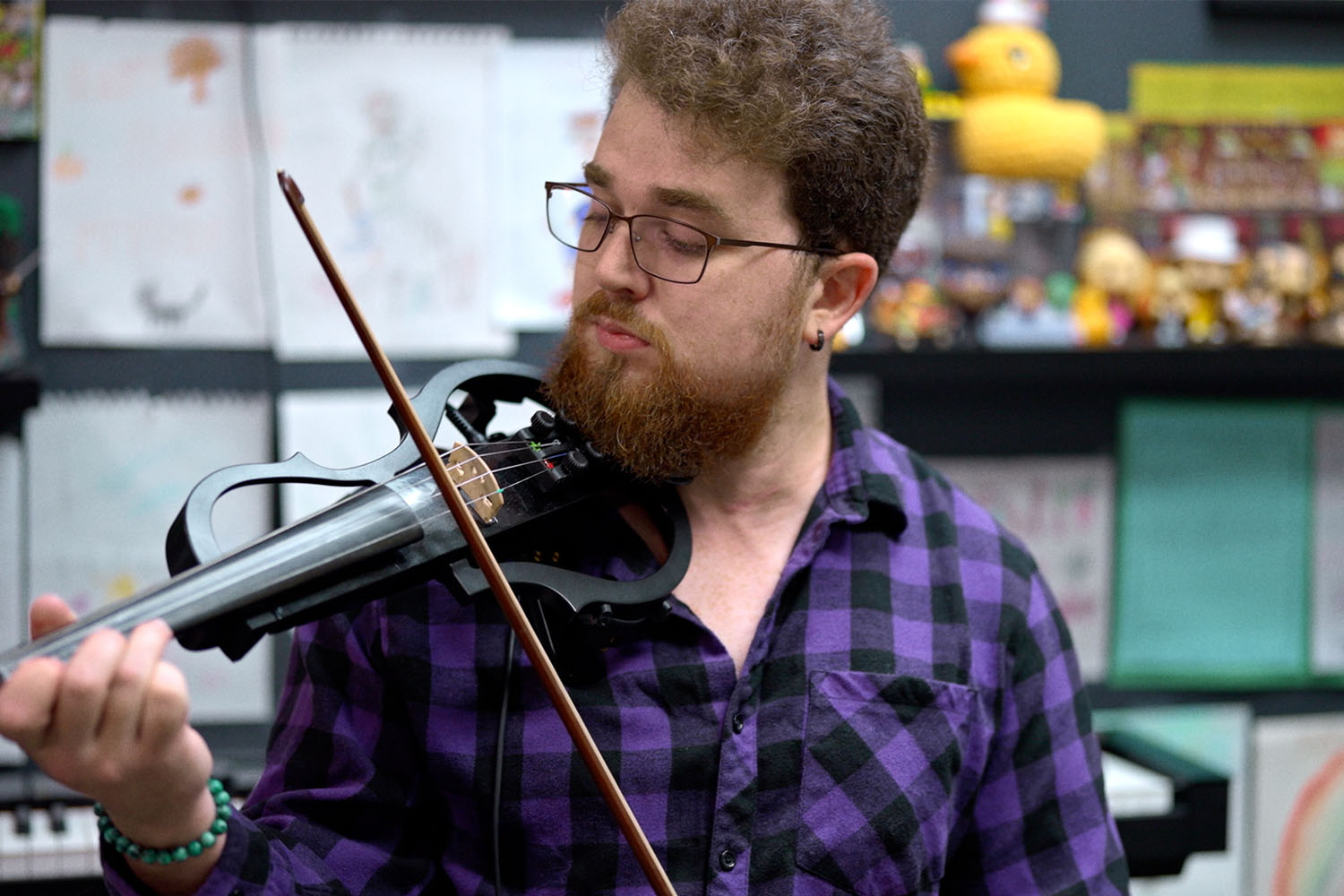There is nothing comparable to the sound of tens of thousands of monarch butterflies taking flight – or “cascading” – from an Oyamel fir after being disturbed by a bird or a gentle breeze.
“It’s a rustling, a whispering of wings,” says Orley “Chip” Taylor ’66 MS, ’70 Ph.D., professor emeritus of ecology and evolutionary biology at the University of Kansas and founder of Monarch Watch. “If you had wings made of paper and you imagine them flapping against each other, it would sound a little bit like that. As for the visual cascade, you just sit there and your mouth is open. It’s an awesome thing to view.”
Taylor has seen the spectacle several times in Cerro Pelon, Mexico, a wintering ground that is the southern terminus for millions of the tireless butterflies. From Canada, monarchs fly 3,400 miles, at the rate of 50 to 100 miles per day, for 10 weeks straight. No other insect travels as far.
And perhaps no human is doing more than Taylor to save the black, orange, and white Danaus plexippus, whose numbers have plummeted 90 percent in the past two decades due to herbicide use and habitat encroachment.
For the full story, go the UConn Magazine website.



